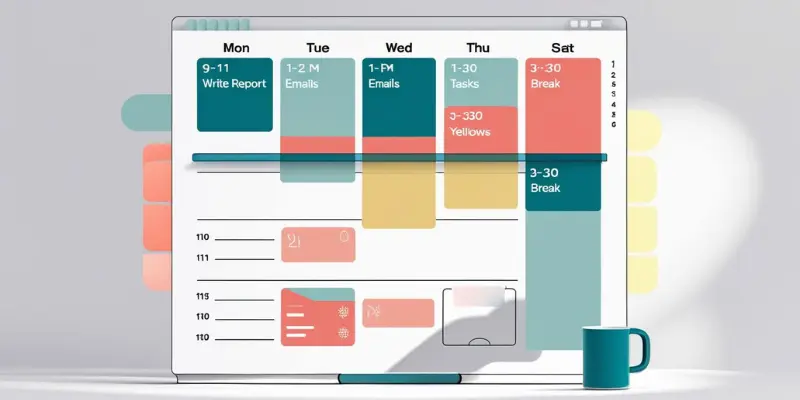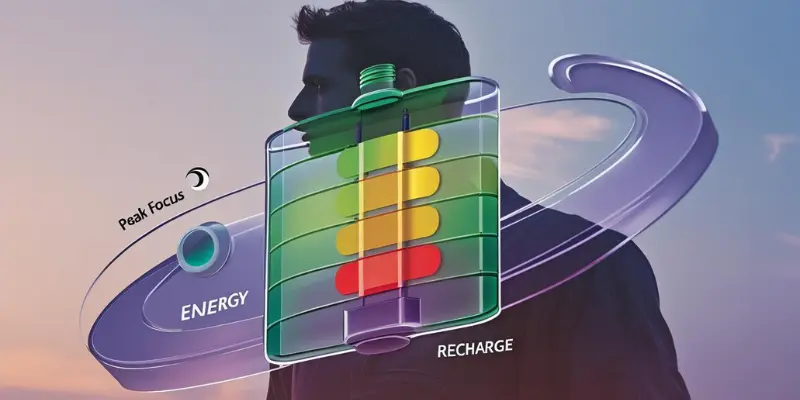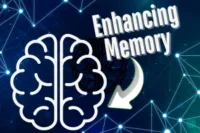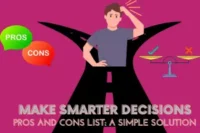Time Blocking vs. Energy Management: Which Productivity Method is Right for You in 2025?
Published: 29/07/2025
Are you constantly busy, yet find yourself drained, staring at an unfinished to-do list, or worse – battling burnout by lunchtime?
This is a scenario many of us are familiar with. The feeling of rushing from task to task, frantically checking off items, only to end the day feeling exhausted yet unaccomplished. We’ve all been there, thinking that if we just manage our time better, we’ll be more productive. But what if time management alone isn’t the key to true productivity?
The Problem with Traditional Productivity Paradigms
In today’s fast-paced world, it’s easy to get caught in the cycle of “busy-ness.” The traditional productivity models, like simply managing time through strict scheduling, often overlook the human element: energy. Time is finite, but human energy is not—it ebbs and flows throughout the day. Trying to force peak output into every hour, without considering the fluctuations in our energy, is a surefire recipe for exhaustion.
Many productivity enthusiasts and even top leaders, such as those featured in Forbes and Medium, have come to recognize that this approach is unsustainable. Pushing through low-energy periods, burning the candle at both ends, or feeling pressured to do more than your capacity allows—often leads to burnout rather than success. It’s clear that a shift is needed.
The Core Dilemma: Time Blocking vs. Energy Management
At the heart of the modern productivity conversation are two powerful methods: Time Blocking and Energy Management.
- Time Blocking has long been heralded as the gold standard for structure. It’s a method that promises clear boundaries, focused work, and a well-organized calendar. Yet, it often ignores the natural rhythms and fluctuations of human energy, assuming that each hour is equally effective for peak productivity.
- Energy Management, on the other hand, is the rising star of modern productivity. It focuses on aligning tasks with the body’s natural energy levels, ensuring that we work smarter, not harder. By managing energy, we aim to achieve sustainable output, avoid burnout, and maintain peak performance over longer periods.
The Promise: A Balanced, Sustainable Approach
In this guide, we’re going to dive deep into both Time Blocking and Energy Management, exploring the strengths and weaknesses of each. More importantly, we’ll show you how to integrate these two strategies seamlessly. By understanding how they complement each other, you’ll be able to redefine your productivity, boost your well-being, and enhance your overall success in 2025—without falling victim to the burnout cycle.
Stay with us as we break down these methods, offering you the insights and actionable steps to elevate your productivity, optimize your work-life balance, and unlock the best version of yourself.
The Hidden Trap of Just “Managing Time”
To successfully implement Time Blocking, it’s essential to first understand its core principle—allocating specific blocks of time to dedicated tasks. This method transforms your day from chaos into a structured and intentional schedule, ensuring you stay focused and productive throughout the day.
(Here, we’ll explore the fallacy of focusing solely on time management and how it can lead to frustration and burnout if not balanced with energy management.)
What is Time Blocking?
At its core, Time Blocking is a simple but powerful productivity method. It involves allocating specific blocks of time on your calendar to specific tasks. Rather than working through a loose, undefined to-do list, you dedicate a set amount of time for each task, ensuring that your day is structured and intentional.
Time Blocking involves scheduling focused, uninterrupted chunks of time for particular tasks or types of work. This practice helps to create clear boundaries around work, minimizes distractions, and allows you to concentrate deeply on one thing at a time.
Brief Historical Context/Proponents
While Time Blocking might sound like a modern-day trend, it has been embraced by some of the world’s most productive and successful people.
- Cal Newport, a productivity expert and author of Deep Work, advocates for Time Blocking as a way to minimize distractions and maintain focus on high-level tasks.
- Bill Gates and Elon Musk are often cited as proponents of structured time, using calendars to create tightly managed schedules to maximize output and prevent wasted time.
These figures, along with others, have shown that the most effective way to manage one’s workday is not to reactively check off tasks as they come but to proactively plan dedicated time slots for the important work that truly moves the needle.
Real-World Example
Imagine Sarah, a mid-level project manager in a fast-paced tech company. She used to feel overwhelmed by the constant juggling of meetings, emails, and deliverables. Her days were scattered, with little time for focused work. Then, she decided to implement Time Blocking.
Sarah blocked off specific hours in her calendar for deep work on her project, separated from her daily meetings and email-checking time. By the end of the week, she had finished major deliverables she had been putting off for months. Not only was she more productive, but her stress levels decreased as she found herself focusing deeply on one task at a time.
How Time Blocking Works (And Why It’s Powerful for 2025)
In a world where multitasking and constant digital interruptions are the norm, Time Blocking offers a sanctuary of focus and efficiency. Let’s break down how to implement it effectively:
- List All Tasks (Work, Personal, Breaks):
Start by listing everything you need to do—work tasks, meetings, personal obligations, and, of course, breaks. Don’t leave anything out. This list should cover all aspects of your day to ensure you’re fully prepared. - Estimate Time for Each Task:
Once you have your list, estimate how much time each task will take. This doesn’t need to be perfect, but it helps you get a realistic view of how much time you truly have in a day. - Assign Tasks to Specific, Unbreakable Blocks on Your Calendar:
Take your tasks and assign them to blocks of time on your calendar. For example, dedicate 9:00 AM – 11:00 AM to writing a report or 1:00 PM – 2:00 PM for responding to emails. The key here is to treat these blocks like appointments that you cannot reschedule or interrupt. - Treat Blocks Like Appointments:
Just as you wouldn’t cancel a meeting with a client, you shouldn’t cancel your Time Block for focused work. Protect your Time Blocks fiercely to avoid slipping into the trap of “I’ll do it later.” - Review and Adapt:
At the end of the week, review how your Time Blocks went. Did you stick to them? What could you improve? Time Blocking requires regular adjustment and fine-tuning, especially as you encounter unexpected tasks or interruptions.

Key Benefits of Time Blocking
- Increased Focus (Single-Tasking):
By dedicating blocks of time to one task, you reduce the temptation to multitask and increase your ability to focus deeply on a single task. - Reduced Context-Switching:
Context-switching is the enemy of productivity. Time Blocking helps by reducing the need to jump from one task to another, which drains your mental energy. - Better Estimation Skills:
Time Blocking helps improve your ability to estimate how long tasks take. Over time, you’ll become better at planning and avoiding under- or over-scheduling. - Combating Parkinson’s Law:
Parkinson’s Law states that “work expands to fill the time available for its completion.” By limiting the time you have for each task, Time Blocking helps you avoid unnecessary delays and encourages efficiency. - Clearer Boundaries for Deep Work:
Time Blocking creates physical boundaries for deep work, ensuring that distractions are minimized during focused sessions.
2025 Relevance: The Role of Technology in Time Blocking
In the modern world, technology has made Time Blocking even more effective and easy to implement. Digital calendars such as Google Calendar, Outlook, and even specialized apps like Trello allow you to easily schedule and adjust your time blocks. These platforms often integrate with communication tools (e.g., Slack, Zoom), so you can seamlessly adjust your day and avoid interruptions.
Even more exciting, AI-powered scheduling apps like Motion are taking Time Blocking to the next level. These apps automatically adjust your schedule based on your energy patterns, upcoming deadlines, and other variables, offering suggestions for the optimal time to tackle certain tasks. As AI continues to evolve, tools that help optimize your Time Blocks for efficiency and focus will become indispensable in 2025 and beyond.
The Unseen Cracks: Limitations of Pure Time Blocking
While Time Blocking is an incredibly effective method, it’s not without its limitations. Here’s what you need to be aware of:
Rigidity vs. Reality:
Life is unpredictable. No matter how tightly you schedule your day, interruptions happen. Whether it’s an urgent meeting, an unexpected phone call, or a personal matter that needs attention, your schedule might get derailed. Time Blocking assumes that the blocks will be uninterrupted, which is often unrealistic.
Ignoring Human Fluctuations:
One of the main criticisms of pure Time Blocking is that it doesn’t take into account the natural fluctuations in energy throughout the day. Not all hours are equal. For example, you may feel mentally sharp and focused in the morning but sluggish by mid-afternoon. Trying to power through a deep work block during your low-energy period often leads to diminishing returns. As Forbes points out, this rigidity can result in burnout, as it pushes individuals to work during periods when they’re least likely to be productive.
Potential for Burnout:
If you over-schedule yourself or rigidly adhere to your blocks without considering your mental and physical state, you might burn out. While Time Blocking is great for structure, it can contribute to stress and fatigue if not balanced with flexibility and self-care, as highlighted by Medium.

In the next section, we’ll dive into Energy Management, a method that complements Time Blocking by aligning tasks with your natural energy levels. Stay tuned to discover how you can balance both methods for optimal productivity.
The Powerhouse Within: Mastering Energy Management
To master productivity, it’s crucial to focus not just on managing time but also on optimizing your energy. Energy Management involves understanding and harnessing your physical, mental, emotional, and spiritual energy to perform at your highest potential, ensuring sustainable output and well-being.
What is Energy Management? Beyond Just Sleep
When we think about productivity, we often focus on time management—how to structure the hours of our day. However, energy management is just as crucial, if not more. Unlike time, which is a finite resource, energy is renewable. By understanding, maintaining, and optimizing your personal energy—physical, mental, emotional, and spiritual—you can perform at your best, no matter what tasks come your way.
Energy management is all about tuning into your body’s natural rhythms and maximizing your vitality when it matters most. It’s about aligning your tasks with your energy levels to perform with presence and grounded attention rather than forcing your way through low-energy periods.
In this approach, energy is seen as a fluid, dynamic resource—something you can recharge and direct for optimal performance. Tivazo, a productivity expert, emphasizes that while time is fixed, energy is malleable, and its efficient management is the key to long-term productivity.
The Science of Your Inner Battery: Why Energy Matters
Think of your body as a battery—it has different charge levels throughout the day. By understanding this, you can unlock new heights of productivity and focus.
- Ultradian Rhythms (90-Minute Cycles):
Our bodies operate in ultradian rhythms, which are cycles that typically last about 90 minutes. After this period of heightened focus, your brain naturally needs a break to recharge. Pushing past this point can lead to mental fatigue and diminished performance. Recognizing these cycles and working with them, not against them, allows you to maintain energy and focus throughout the day. - Chronotypes (Early Birds vs. Night Owls):
Your chronotype plays a critical role in how you manage your energy. Early birds may feel energized and focused in the morning, while night owls hit their stride later in the day. Understanding your chronotype helps you schedule your most important tasks during your peak energy times, avoiding frustration and burnout. - Strategic Choices & Brain Activation:
The choices you make throughout the day have a direct impact on your brain’s performance. For example, making strategic decisions that align with your energy (like taking a break after deep work or scheduling creative tasks during high-energy periods) activates the brain regions responsible for focus and resilience, like the striatum. These choices can help you maintain mental sharpness and productivity over the long haul, as highlighted by Medium’s insights into brain function.

Real-World Example: Shifting from Time-Focused Burnout to Sustainable Productivity
Take the case of Mark, a senior manager at a marketing firm. Mark had always relied on Time Blocking to stay organized, but it wasn’t enough. His days were packed with scheduled tasks, and although he finished them, he often felt drained by the end of the day. By switching his focus from purely managing time to managing his energy, Mark began noticing changes in his performance.
He started by identifying when his energy was at its peak and when it dipped. In the mornings, he felt sharp, so he reserved those hours for strategic thinking and high-focus work. By mid-afternoon, when his energy usually dropped, he scheduled meetings or administrative tasks. This shift, from a time-centric focus to an energy-centric approach, allowed him to work sustainably without feeling burnout creeping in.
Your 2025 Energy Toolkit: Actionable Strategies
Mastering energy management isn’t about flipping a switch; it’s about building awareness, understanding your energy patterns, and making strategic choices to protect and maximize your energy. Here’s how you can start:
1. The Energy Audit (Highly Actionable)
Start by tracking your energy levels throughout the day. This will give you insight into when you’re at your best and when you’re likely to experience fatigue.
- Graph Your Day:
For one week, track your energy levels on a scale of 1-10, noting your activities and the corresponding energy levels. Do you feel most energized in the morning or after lunch? Use this data to identify peak and low energy times. - Scorecard Your Habits:
List daily activities (work, meetings, breaks, meals) and score them based on how they impact your energy. + for energizing, – for draining, and = for neutral. The goal here is awareness—not an immediate overhaul of your habits, but understanding where you’re losing energy.
2. Strategic Energy Replenishment
- Active Breaks:
Rather than scrolling through social media during breaks, opt for active rest. A walk, stretching, or light exercise can help refresh your mind and body, keeping you energized throughout the day, as recommended by Forbes. - Nutritional & Hydration Basics:
Fuel your body properly. Hydration and balanced meals—rich in complex carbs, proteins, and healthy fats—are essential for long-lasting energy. Avoid high-sugar snacks that lead to crashes. - Mindful Moments:
Integrate short moments of mindfulness into your day. Whether it’s deep breathing, a few minutes of meditation, or a brief walk outside, these practices can recharge your mental and emotional batteries. - Social Connection:
Positive interactions with colleagues or friends can lift your spirits and energize you. A quick, friendly chat can help prevent mental fatigue and keep you motivated.
3. Protecting Your Energy
To truly manage your energy, you must also protect it:
- Learn to Say “No”:
Saying yes to everything can deplete your energy. Set boundaries and learn to decline requests or tasks that drain you without offering meaningful returns. - Set Realistic Boundaries:
Overcommitting is a productivity killer. Be realistic about what you can handle, and don’t be afraid to let others know when you need time for yourself or for rest. - Prioritize Energy-Boosting Activities:
Organize your day to include activities that replenish your energy, whether it’s working on something you’re passionate about or taking time to relax and reset.
The “Productive Day Redefined”
In Medium’s redefinition of productivity, the focus shifts from trying to do everything to doing what matters most. Instead of overloading your day with tasks, focus on completing just three important tasks and incorporating one act of self-care. This ensures that you stay energized and focused on your priorities, making each day truly productive.
By mastering Energy Management, you can shift from surviving your day to thriving, ultimately achieving sustainable productivity and well-being.
In the next section, we’ll dive into how Time Blocking and Energy Management can complement each other, creating a powerful hybrid system for 2025 productivity. Stay tuned to unlock the secrets of balancing structure with energy for ultimate success!
Time Blocking vs. Energy Management: The Ultimate Showdown
Let’s dive into a side-by-side comparison of Time Blocking and Energy Management to understand how these productivity methods stack up against each other. Both have their merits, but as we’ll see, they serve different purposes and can be more powerful when used together.
| Aspect | Time Blocking | Energy Management |
| Primary Focus | Allocating hours to tasks | Maximizing personal capacity and focus |
| Core Principle | Efficiency and structure | Sustainability and effectiveness |
| Resource Type | Fixed time (24 hours in a day) | Renewable energy (mental, physical, emotional) |
| Key Question Answered | “When will I do it?” | “When am I best equipped to do it?” |
| Risk if Unbalanced | Overwhelm, burnout due to rigid scheduling | Lack of structure, aimless work, inefficiency |
| Ideal Use Case (Initial) | Highly structured, deadline-driven roles | Creative, flexible roles, or personal productivity |
Time Blocking emphasizes precision and scheduling. It works best for structured roles or situations where tasks need to be completed in a set order or by a particular time. The method focuses on efficiency, breaking the day into specific time slots dedicated to distinct tasks. The core of this method is allocating hours to tasks, answering the question, “When will I do it?”
Energy Management, on the other hand, shifts the focus from time to the person performing the task. It emphasizes the sustainability of one’s energy over the course of the day. The key question here is “When am I best equipped to do it?” Energy management seeks to maximize performance based on when your mental, emotional, and physical energy is at its peak. It’s about understanding that energy is renewable (with the right rest and replenishment) and ensuring that the right tasks are completed during the right energy windows.
While Time Blocking is ideal for structured, task-driven roles where deadlines and organization are paramount, Energy Management shines in more creative or flexible environments, where working with energy fluctuations leads to better results. The real magic happens when you combine these two methods—using Time Blocking to structure your day and Energy Management to decide how you approach the tasks within those blocks.
The Core Difference: Container vs. Fuel
To understand the contrast between Time Blocking and Energy Management more clearly, let’s consider the “Container vs. Fuel” analogy:
- Time is the container:
Time is finite, like a container that holds your daily activities. You can organize your tasks and allocate hours throughout your day. However, no matter how perfectly you schedule, your container will be ineffective if the fuel inside it is running low. - Energy is the fuel:
Energy, like fuel in a car, is what powers your tasks and keeps you going. The quality of that fuel—whether it’s high-octane or running on fumes—determines how efficiently you can work and how far you’ll get. Even with the best-planned schedule, if you don’t have the energy to fill it, your day will grind to a halt.
In the 2025 work landscape, where flexibility, remote work, and digital distractions are common, simply optimizing the “container” (your time) is no longer enough. Time Blocking alone might help you fit more tasks into your day, but it doesn’t account for the fact that your energy is a dynamic, fluctuating resource. If you’ve filled your time with work during a low-energy period, you’ll likely struggle to complete tasks effectively, no matter how well-organized your schedule is.
Think of it this way: you can have a perfectly structured day, but if you don’t fuel it with the right energy at the right times, you won’t get far.
The key takeaway here is that while Time Blocking organizes your day, Energy Management ensures you have the fuel to make the most of it. The most successful professionals in 2025 won’t just rely on rigid time schedules but will actively manage their energy, making thoughtful decisions about when to perform specific tasks based on their personal energy rhythms.
In the next section, we will explore how you can integrate Time Blocking and Energy Management to create a hybrid productivity system that maximizes both structure and sustainable output. By using both methods, you can transform your workflow and unlock your best productivity, day in and day out. Stay tuned!
Expert Tips: The Synergy Strategy for 2025 Productivity
To thrive in 2025, professionals must move beyond choosing between Time Blocking and Energy Management. By integrating both strategies, you create a hybrid approach that balances the efficiency of structure with the sustainability of energy, allowing you to maximize productivity without burnout.
The Power of AND: Why You Need Both
The most successful professionals in 2025 won’t choose between Time Blocking and Energy Management; they’ll integrate them seamlessly to create a hybrid approach that maximizes both structure and sustainability. The key to thriving in today’s fast-paced, ever-changing work environment is not to rely on just one method, but to combine the power of efficiency with sustainability.
The “Ultimate Hybrid” involves using Time Blocking to structure your day and ensure you’re focusing on the right tasks at the right time, while simultaneously incorporating Energy Management to align your most demanding tasks with your personal energy highs. This creates a productivity system that’s not only effective but sustainable—ensuring you’re working at your best, when you’re best equipped to do so.
The goal is not just to get more done, but to get more meaningful work done—while also preserving your energy, focus, and well-being.
Actionable Integration Steps
Here’s how you can start integrating Time Blocking and Energy Management for optimal productivity in 2025:
- Start with the Energy Audit:
Begin by understanding your personal energy rhythms. This means tracking your energy levels throughout the day to identify your “power hours” (when you’re most energetic and focused) and “drain periods” (when you feel mentally or physically fatigued). Medium suggests using this insight to structure your day so that high-priority tasks are completed during peak energy times. Action Step: Track your energy levels for a week. Rate your energy on a scale of 1–10 throughout the day and note the times you feel the most energized and drained. This gives you the foundation for scheduling tasks that match your natural rhythm. - Time Block with Intelligence:
Once you understand your energy patterns, you can Time Block with intelligence. Schedule your most demanding, high-impact tasks—those “frogs” (a concept from Eat That Frog)—into your peak energy blocks. This ensures you’re tackling your most important work when you’re at your best, rather than during your energy lows. Action Step: Block your deep work or most strategic tasks during your power hours. Use your low-energy times for meetings, emails, or administrative tasks that don’t require intense focus. - Strategic Rest Blocks:
Build in strategic rest blocks throughout your day. These aren’t just passive breaks, but intentional moments designed to replenish your energy and reset your mind. Whether it’s “lazy time” (Forbes), active breaks (light walking, stretching), or self-care activities (breathing exercises, a short meditation), these rest periods are vital for maintaining long-term productivity. Action Step: Schedule rest blocks, particularly after high-energy tasks. Don’t wait until you’re exhausted—actively prevent burnout by planning for recovery. - Flexible Boundaries:
While Time Blocking provides structure, it’s important to maintain flexible boundaries. Allow yourself to shift your schedule if you’re feeling unusually drained or unexpectedly energized. This flexibility ensures that you’re always working in alignment with your body’s needs, rather than rigidly sticking to a schedule that may no longer serve you. Action Step: Treat your Time Blocks as guides, not hard rules. If you’re feeling more focused in the afternoon, shift a block from your morning. Similarly, don’t hesitate to move less demanding tasks to a time when you’re feeling lower energy. - Leverage 2025 Tech:
The rise of AI-powered tools makes integrating both Time Blocking and Energy Management more seamless than ever. Apps like Motion use artificial intelligence to analyze your energy patterns and adjust your schedule accordingly. By learning your preferences, these tools suggest optimal time blocks based on your energy levels, personal goals, and work deadlines. Action Step: Explore AI-powered scheduling tools to help streamline your integration of Time Blocking and Energy Management. Let technology take over the task of fine-tuning your day to maximize productivity.
Common Mistakes to Avoid
While the hybrid approach of Time Blocking and Energy Management is powerful, it’s crucial to avoid common mistakes that can undermine its effectiveness. Here’s what to watch out for:
- Trying to Force High-Energy Work into Low-Energy Slots:
Many people make the mistake of scheduling their most demanding tasks during low-energy periods, thinking they can “power through.” This leads to diminished focus, frustration, and burnout. Mistake to Avoid: Recognize that energy is a finite resource and trying to push through will only deplete it faster. Instead, schedule high-energy tasks when you’re feeling sharp and refreshed. - Neglecting Breaks or Self-Care:
Over-scheduling can be tempting, but neglecting breaks or self-care is a productivity killer. If you don’t plan for adequate rest, you risk burning out by mid-afternoon. Mistake to Avoid: Ensure you’re scheduling intentional breaks and practicing self-care activities regularly, even if it feels counterintuitive at first. - Over-Scheduling Every Minute Without Buffer:
Time Blocking is about structure, but over-scheduling every minute of the day leaves no room for flexibility. Life happens—whether it’s an unexpected task or a sudden energy dip. Without room for adjustment, you risk feeling overwhelmed. Mistake to Avoid: Build buffers between Time Blocks to give yourself space for transitions and adjustments. - Ignoring Your Body’s Signals of Fatigue:
Overworking and ignoring signs of fatigue are surefire ways to burn out. Your body and mind send signals when they need rest, and ignoring them will only lead to diminished productivity. Mistake to Avoid: Listen to your body. If you’re feeling drained, take the necessary steps to restore your energy—whether it’s a break, a change in task, or a pause to recharge. - Treating Time and Energy Management as Separate, Competitive Systems:
One of the biggest mistakes people make is treating Time Blocking and Energy Management as competing systems rather than complementary ones. Both are essential—Time Blocking provides structure, while Energy Management ensures you’re working at your best. Mistake to Avoid: Don’t choose one over the other. Combine them into a holistic strategy that balances both structure and sustainability for long-term success.
In the next section, we’ll wrap up by summarizing the key takeaways and empowering you to take action towards redefining your productivity.
Conclusion: Unlock Your Best Productivity in 2025
In this guide, we’ve explored two powerful productivity methods: Time Blocking and Energy Management. Time Blocking helps you structure your day by allocating specific blocks of time to dedicated tasks, creating focus and minimizing distractions. However, it doesn’t account for the fluctuations in human energy, which is where Energy Management comes in. By understanding and optimizing your personal energy, you can align your tasks with your peak performance windows, ensuring sustainable productivity.
We also introduced the “Container vs. Fuel” analogy: Time is the container that holds your day, but without energy (the fuel), even the best-organized schedule won’t get you far. In 2025, the true key to productivity lies in combining these methods—using Time Blocking for structure while applying Energy Management to ensure you’re working when you’re at your best.
Empowering Final Thought:
True productivity isn’t about doing more—it’s about doing what matters when you’re at your best. By focusing on the synergy between Time Blocking and Energy Management, you can accomplish high-impact tasks without burning out. This approach not only leads to greater results, but it also enhances your overall well-being, allowing you to work smarter, not harder.
Ready to revolutionize your workflow and reclaim your energy in 2025? It’s time to take action! Start by performing your own Energy Audit this week. Track your energy levels, identify your power hours and drain periods, then integrate those insights into your calendar to align tasks with your natural energy rhythms.
Take the first step today—try these fixes and feel the difference in your productivity. Share your initial energy insights in the comments below, or subscribe to get more expert strategies to optimize your productivity. Let’s make 2025 the year you work smarter, not harder!
Your Burning Questions Answered: Mastering Productivity with Time Blocking & Energy Management
Time Blocking helps structure your day by dedicating specific hours to specific tasks. This approach reduces distractions, improves focus, and ensures you’re spending your time on the most important activities, leading to higher productivity.
Time Blocking focuses on scheduling tasks into defined time slots, while Energy Management revolves around aligning your tasks with your natural energy cycles, ensuring that you work when you’re at your peak.
To optimize your productivity, schedule your most challenging tasks during your peak energy periods. Use Time Blocking to structure your day, but adjust it according to your energy levels to avoid burnout.
Both strategies are crucial. Start by understanding your energy patterns through an Energy Audit. Then use Time Blocking to structure tasks around your energy highs and lows, creating a balanced, sustainable workday.
It’s important to listen to your body. Schedule breaks during your low-energy times. Active breaks like walking or stretching can help refresh your mind and body, ensuring you’re ready for your next Time Block.
Common mistakes include over-scheduling every minute, neglecting breaks, and failing to adapt the schedule when energy dips or unexpected tasks arise. Flexibility within your Time Blocks is key to avoiding burnout.
To track your energy patterns, conduct an Energy Audit. Record your energy levels throughout the day on a scale from 1-10 and notice the times when you feel most focused or drained. This will help you optimize your schedule.
Yes, Time Blocking can work for creative tasks, but it’s crucial to match your most creative hours with the Time Blocks dedicated to brainstorming, writing, or designing. Use shorter, focused blocks to maintain energy.

- Be Respectful
- Stay Relevant
- Stay Positive
- True Feedback
- Encourage Discussion
- Avoid Spamming
- No Fake News
- Don't Copy-Paste
- No Personal Attacks



- Be Respectful
- Stay Relevant
- Stay Positive
- True Feedback
- Encourage Discussion
- Avoid Spamming
- No Fake News
- Don't Copy-Paste
- No Personal Attacks





